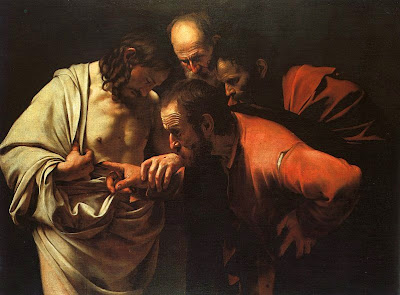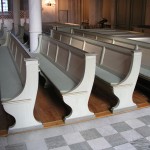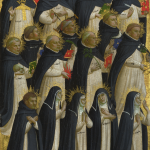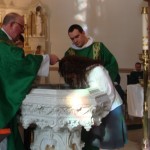First, a quick clarification: in yesterday’s post about Divine Mystery, I used the phrases ‘Catholic’ and ‘Orthodox’ to refer to two broad approaches to thinking about parts of theology. Both approaches are used in various proportions and contexts in each faith. I didn’t mean to present either approach as a totalizing aspect of either tradition, and I’m sorry for the confusion. [/religion is complicated!]
So, on to a different part of the responses to that post. Several readers mentioned that going into the nitty gritty of the rebukes to heresies helped them better understand and worship their god. I can certainly imagine that, but I’m still a little skeptical of using the benefits of a particular explanation as evidence for the truth of the metaphysical claim. Consider this example:
In the homily for the Sunday following Easter, the priest was talking about the Doubting Thomas story (John 20:24-29):
But Thomas, one of the twelve, called Didymus, was not with them when Jesus came.
The other disciples therefore said unto him, We have seen the LORD. But he said unto them, Except I shall see in his hands the print of the nails, and put my finger into the print of the nails, and thrust my hand into his side, I will not believe.
And after eight days again his disciples were within, and Thomas with them: then came Jesus, the doors being shut, and stood in the midst, and said, Peace be unto you.
Then saith he to Thomas, Reach hither thy finger, and behold my hands; and reach hither thy hand, and thrust it into my side: and be not faithless, but believing.
And Thomas answered and said unto him, My LORD and my God.
Jesus saith unto him, Thomas, because thou hast seen me, thou hast believed: blessed are they that have not seen, and yet have believed.
The priest explained that, although Thomas had been skeptical, his recognition of Jesus as “My LORD and my God” was a declaration of faith. “After all,” the priest said, “when the moment came, Thomas did not actually touch Jesus’s wounds. The Bible doesn’t say ‘and then he did reach forth his finger and thrust it into his side. The kind of proof he thought he needed was superfluous.”
I was fairly dubious of this exegesis, since I thought Thomas had received the proof he had asked for (after all, this story fuels plenty of atheist rhetoric – “I’ll believe when I get the kind of proof Thomas did”). When I looked it up after Church, it looked like most sources were in favor of my reading (not to mention the Caravaggio embedded at the top of this post). That’s not to say the priest was necessarily wrong. The text doesn’t contradict either reading.
Both readings could be true, and both might provide comfort or point a reader to an important lesson about their faith. Therefore, the fact that a lesson can be drawn is not proof of the historical fact. The same argument applies to the much more abstract, highly conceptual points of disagreement that form the basis for a lot of heresies mentioned in the Nicene Creed and elsewhere. Any story can serve as a pointer to a helpful new frame of thinking, but we’re still left without a heuristic to distinguish true from false.












